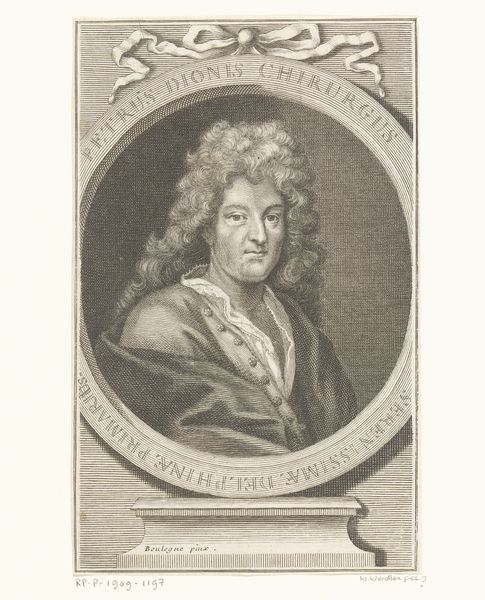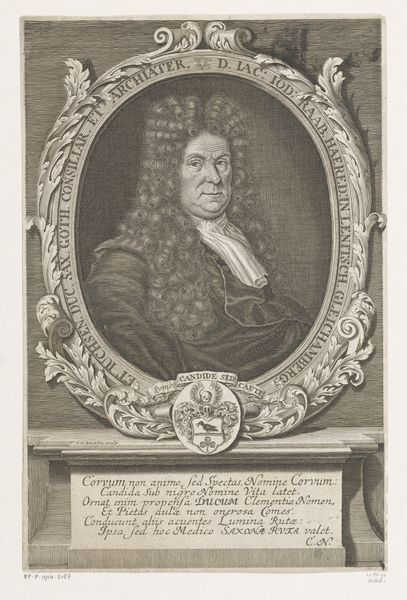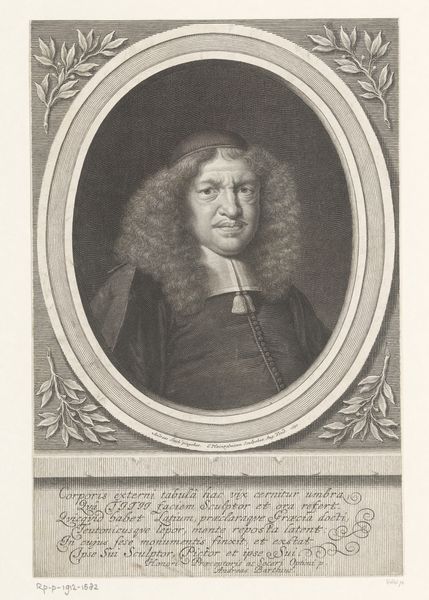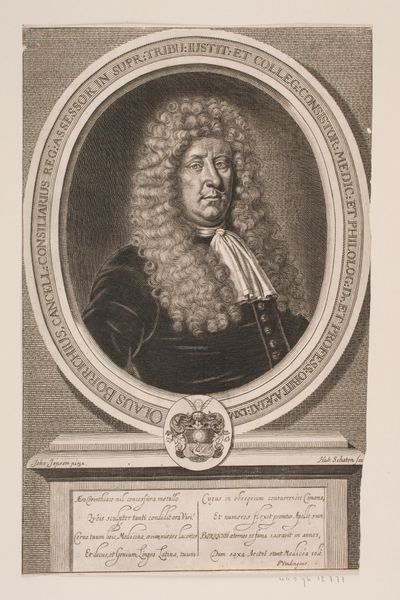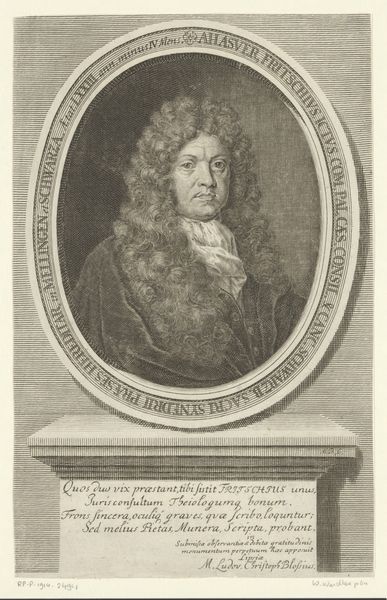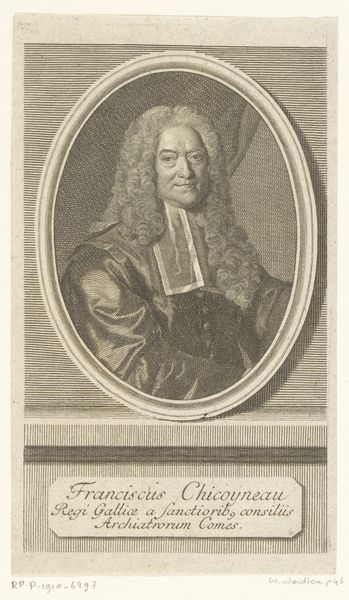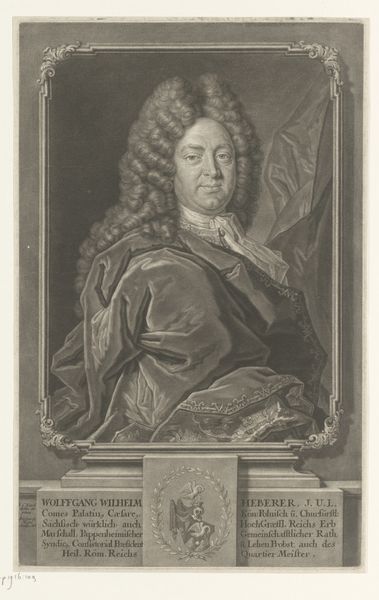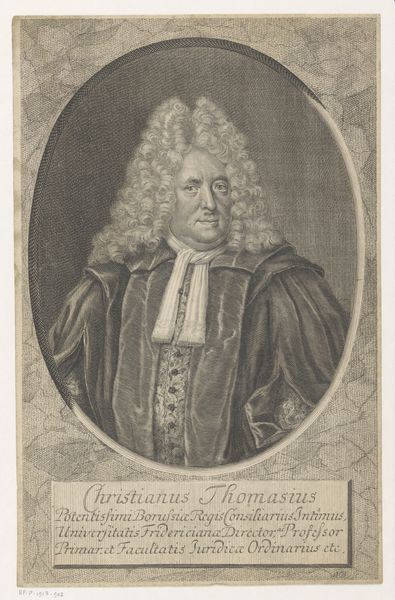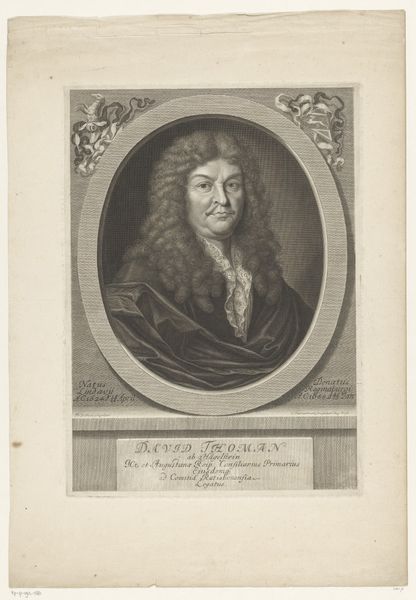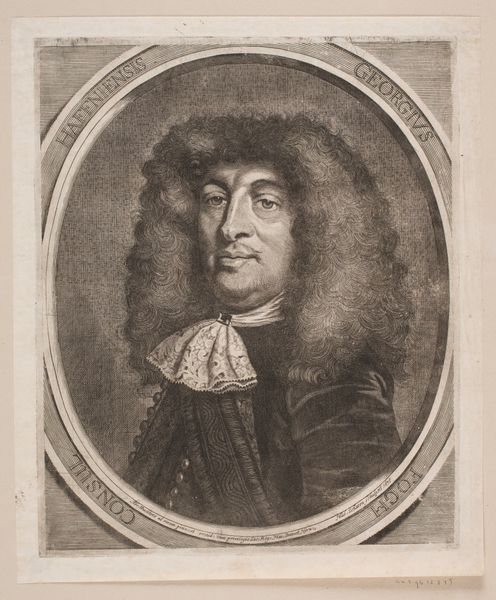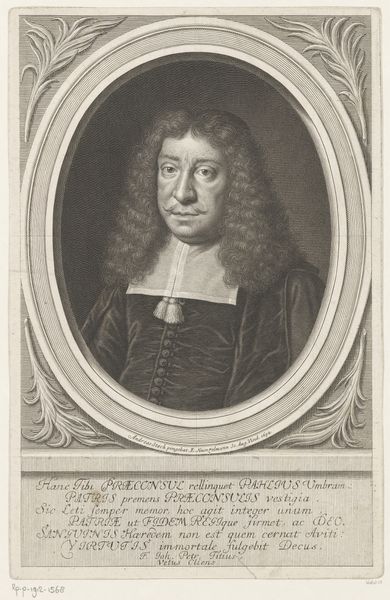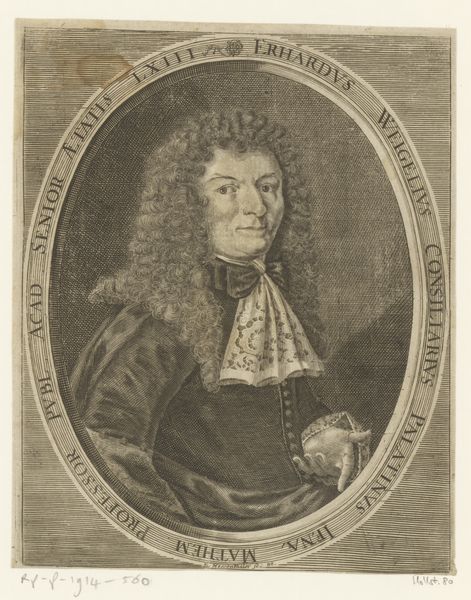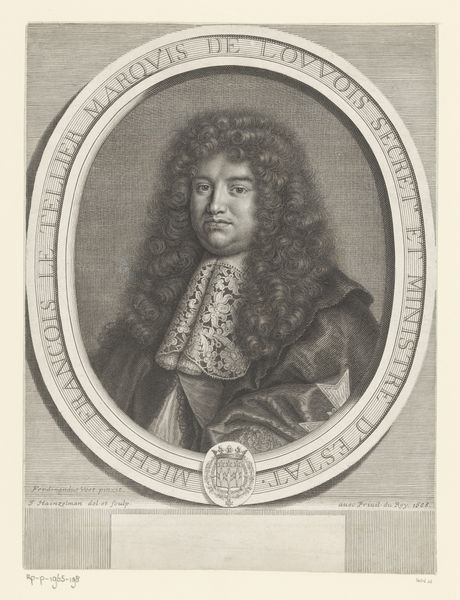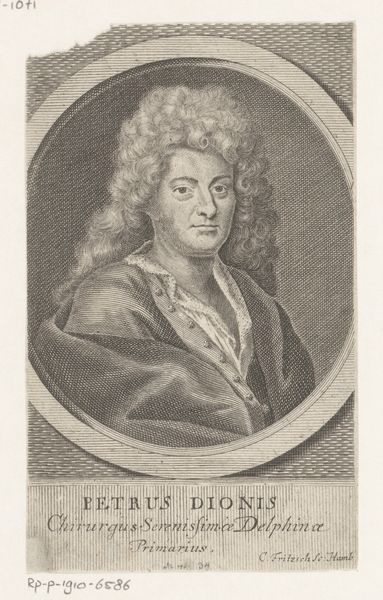
engraving
#
baroque
#
historical photography
#
line
#
history-painting
#
engraving
Dimensions: height 289 mm, width 174 mm
Copyright: Rijks Museum: Open Domain
Curator: Ah, this piece has always captivated me. Here we have Martin Bernigeroth’s engraving, "Portret van Christian Johann Lange," dating back to 1704. It’s currently held at the Rijksmuseum. Editor: My goodness, that's quite the wig! It feels so grand and serious, doesn't it? I'm immediately drawn to the textures—the fur-like hair against the smoother fabric of his coat. Curator: Indeed, Bernigeroth’s choice of engraving as a medium speaks volumes. Engraving allowed for the mass production of these images, making them accessible to a wider audience beyond the elite circles of painted portraiture. It really democratized image-making, in a way. Editor: Democratizing portraiture… I like that! But does the rigid linearity of the engraving process flatten the subject somehow? Does Lange lose some of his three-dimensionality, or personality perhaps? Curator: It's a fair point, but the deliberate linework also emphasizes status and profession. The precise engraving mirrors Lange's own professional world, which the inscription indicates as being "Phil et Medicina Doctor" – a doctor of philosophy and medicine. It links the meticulous artmaking with his profession and stature in society. Editor: A doctor with a philosopher’s wig! I suppose in those times, the boundaries between fields were quite fluid. I can imagine someone debating about the latest medical breakthroughs whilst casually critiquing a Bach cantata. Curator: Exactly! And the symbolic use of a plinth, complete with inscribed name and accomplishments, literally elevates Lange. It signifies the importance of these public figures to contemporary society and its intellectual life. Think of it as 18th-century LinkedIn. Editor: (chuckles) Eighteenth-century LinkedIn. It really is fascinating to think of engravings serving that function—a way to circulate someone's image and professional credentials. It makes me wonder, did Lange commission this portrait himself? Curator: Quite possibly. Printmaking during the Baroque period allowed for artists and their patrons to circulate approved likenesses that bolstered professional reputation, something like marketing! Editor: Fascinating. I appreciate the textures now in a whole new light – not only in the clothing, but also in the ways engraving helped to make status public. Curator: I am glad you came away with a fresh perspective! Editor: Yes, now I'll view all those eighteenth century wigs in a whole new way. Thanks!
Comments
No comments
Be the first to comment and join the conversation on the ultimate creative platform.
